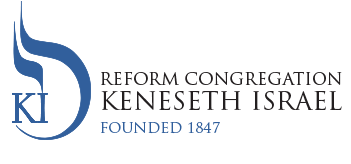20. February 29 – April 29, 2005 (Two concurrent exhibitions)
A. BORIS SCHATZ (1866-1932):
HIS CIRCLE AND THE BEGINNING OF THE BEZALEL ART SCHOOL
FROM THE COLLECTIONS OF BELLA SCHAFER AND THE TEMPLE JUDEA MUSEUM
In naming the school he founded, in Jerusalem in 1906, Bezalel, Boris Schatz linked the achievement of a modern arts school, contemporary to its time, to a biblical ethos. Bezalel was the first Jewish artist. For the visionary Schatz the purpose of this first art school in the Land of Israel was linked to the Zionist dream. Bezalel was to serve as a training ground for pioneering immigrants in need of retraining and purposeful work that would contribute to a new economy and a new society. Schatz directed the school towards the applied arts and it strongly reflected the tastes and ideology of its founder. However, a dissident group, the “New Horizons” artists, many of whom trained at Bezalel, most notably Reuven Rubin, saw themselves as studio centered, not as applied, or crafts, artists. It was they who inspired succeeding generations of visual artists in Israel.
In 1968 noted art historian Alfred Werner decried a lack of respect towards the earliest founders of Israeli art. Notably he spoke of Boris Schatz, “in the past three decades nobody has claimed him to have been an important artist, nor even a far-sighted educator…... He tried to concoct a "Jewish art," based on Jewish history, legends, customs, traditions…. However, fairness requires us to stress his merits—and not to gloss over his shortcomings. Schatz was a selfless idealist and an indefatigable worker and organizer. A very large percentage of the veteran painters, sculptors and print-makers of Israel benefited by the opportunities Bezalel offered.”
The Israel of the 60s was a country that was just beginning to establish itself culturally on the world stage. The inward looking provincialism of the formative years of the state was giving way to an internationalism that included the arts of Israel. The highly stylized crafts idiom of Bezalel was replaced by work comfortable in an international milieu. In Israel the influence of the Abstract Expressionism that ruled the art world meant that the visual conservatism and realism of the Bezalel attitude was relegated to the “trash heap” of history.
Just thirty years from the date of Werner’s writing, public opinion changed dramatically again. The best evidence of this recognition of the importance of the Bezalel School is found in both the museum world and in the auction world. In 1983 the Israel Museum presented an exhibition of the founding years of Bezalel. It was an enormous success and the exhibition catalog sold out in both English and Hebrew editions. Later, in 1998 an international auction devoted entirely to works from the school’s earliest beginnings was held under the auspices of Sotheby’s, the world’s most respected auction house. That 1998 auction was the first of its kind but since then, such auctions have become the norm, and museums around the world now collect and exhibit works from Bezalel.
Today, a more sophisticated art world is engaged in a reappraisal of early movements such as that of Bezalel. This exhibition offered viewers a first hand look at work seldom seen in this area by both students and professors of the school. Included were more contemporary works as an indication of the continued prominence of Bezalel as Israel’s leading art school.
Rita Rosen Poley
Director/Curator, Temple Judea Museum
An Artists’ Utopia in a New Land - The Bezalel School
BACKGROUND: The State of Israel was born in 1948 but Israeli art began decades before. On March 1, 1906, driven by a vision of creating original Jewish art within a Middle Eastern motif, Boris Schatz founded the Bezalel Industrial School in Turkish-held Jerusalem. Schatz, who had been head of the Royal Academy in Sofia and a sculptor for the Royal Bulgarian Court, enlisted enthusiastic support from local craftspeople and artists in Palestine. By 1910, the new school had a student body of over 500. Schatz’ vision originated in 1903 when he met the Zionist leader, Theodore Herzl. In 1905 at a meeting of the Zionist Congress Schatz proposed the idea of an art school in the Yishuv, (the settlement in Palestine.) Schatz later added a small museum to the school, which was the foundation for the Bezalel Museum and later the Israel Museum.
As a school geared towards the practical arts and crafts, Bezalel strove to foster in its students a national style of art, drawing both from European techniques and Near Eastern art forms. At the same time, its philosophy was traditional, and Schatz eventually encountered much resistance from some students who were drawn to modernist styles. In the end, they were the ones who forged the way for an indigenous Israeli art. However, the invaluable contribution of Schatz is to have placed the visual arts front and center in the life of the developing country.
